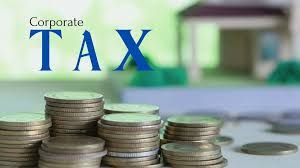Now Reading: UAE Real Estate: 5 Tax Rules Changing Investment Strategies in 2025
-
01
UAE Real Estate: 5 Tax Rules Changing Investment Strategies in 2025
UAE Real Estate: 5 Tax Rules Changing Investment Strategies in 2025

Table of Contents
Changing Investment Strategies : The UAE’s real estate market, valued at AED 958 billion in 2024 with 23.9% year-on-year growth, offers investors 6–9% yields in prime areas like Dubai Marina and Downtown Dubai, per gtlaw.com. The 9% corporate tax (CT) introduced in June 2023 under Federal Decree-Law No. 47, alongside 5% VAT and emirate-specific fees, shapes investment decisions, with non-compliance fines up to AED 500,000, per jaxaauditors.com.
In 2025, new tax rules, driven by digitalization, sustainability, and regulatory reforms, are reshaping investor strategies. This article outlines five tax rules changing UAE real estate investment strategies in 2025, with U.S. investor considerations, using web insights.
UAE Tax Framework for Real Estate Investors
Investors face the following tax considerations, per czta.ae:
- Corporate Tax: 9% on profits above AED 375,000 (~$102,000); 0% for Qualifying Free Zone Persons (QFZPs) or small businesses with revenue below AED 3 million until December 31, 2026, per taxsummaries.pwc.com.
- VAT: 5% on commercial transactions (e.g., short-term rentals, sales); residential sales/long-term leases are zero-rated or exempt, per shuraatax.com.
- Transfer Fees: 4% in Dubai (split 2% buyer/seller); 2% in Abu Dhabi, per providentestate.com.
- Exemptions: No personal income or capital gains tax for individuals; certain structures (e.g., REITs, family foundations) offer CT exemptions, per mosaicchambers.com.
- Compliance: Federal Tax Authority (FTA) registration, seven-year record retention, and EmaraTax filings are mandatory, per hawksford.com.
5 Tax Rules Changing Investment Strategies in 2025
1. Mandatory Digital Tax Reporting via Blockchain
From 2025, the UAE mandates blockchain-based tax reporting for real estate transactions, integrating with the Dubai Land Department’s Real Estate Evolution Space (REES) initiative, per damacproperties.com. This reduces non-compliance fines (AED 50,000–500,000) but requires investment in digital infrastructure.
- Strategic Shift: Investors adopt PropTech platforms to streamline EmaraTax filings, saving AED 10,000–20,000 in compliance costs annually, per jaxaauditors.com, and prioritize digital-ready properties.
- U.S. Consideration: Report digital transactions on Form 1120-F; align with IRS crypto rules, per irs.gov.
- Action: Integrate blockchain tools; train staff on REES; engage advisors, per economymiddleeast.com.
2. Expanded R&D Tax Credits for PropTech
Starting in 2026, with 2025 as a preparation year, 30–50% refundable R&D tax credits for PropTech (e.g., AI analytics, blockchain registries) will reduce CT liability, per virtuzone.com. This incentivizes tech-driven real estate investments.
- Strategic Shift: Investors fund PropTech startups or integrate smart systems, saving AED 300,000–500,000 on a AED 1 million R&D spend, boosting yields by 0.5–1% on a AED 50 million project.
- U.S. Consideration: Claim U.S. R&D credits (up to 20%) on Form 6765; report on Form 1120-F, per irs.gov.
- Action: Partner with Dubai PropTech Group; document R&D costs; prepare FTA filings, per emirabiz.com.
3. Enhanced Green Building Tax Deductions

New 2025 tax deductions for green building upgrades (e.g., solar panels, smart HVAC) align with UAE’s Net Zero 2050 goals, offering 9% CT reductions, per skylineholding.com. These apply to certified projects (LEED, Estidama).
- Strategic Shift: Investors prioritize eco-friendly developments, saving AED 180,000 on a AED 2 million solar investment, preserving 8% yield on a AED 50 million property.
- U.S. Consideration: Claim U.S. Investment Tax Credit (ITC, up to 30%) on Form 3468, per irs.gov.
- Action: Certify projects with EmiratesGBC; file deductions via EmaraTax; consult advisors, per hawksford.com.
4. Tightened QFZP Eligibility Requirements
From 2025, stricter QFZP eligibility for Free Zone entities (e.g., DIFC, DMCC) requires enhanced substance (e.g., local staff, offices) to maintain 0% CT on qualifying income, per pwc.com. Non-compliance triggers 9% CT.
- Strategic Shift: Investors establish robust Free Zone operations, saving AED 270,000 CT on AED 3 million rental income, but budget AED 50,000–100,000 for compliance, per emirabiz.com.
- U.S. Consideration: Report income on Form 1120-F; disclose assets on Form 8938, per irs.gov.
- Action: Set up DIFC office; ensure FTA compliance; monitor non-qualifying income, per flyingcolourtax.com.
5. Tax-Transparent Structures for Golden Visa Investments
The Golden Visa program, requiring AED 2 million (~$545,000) property investments, integrates with tax-transparent family foundations under Ministerial Decision No. 261 of 2024, exempting rental income from CT, per mosaicchambers.com.
- Strategic Shift: Investors use ADGM family foundations for Golden Visa properties, saving AED 180,000 CT on AED 2 million income, preserving 8% yield, per globalpropertyguide.com.
- U.S. Consideration: Report on Form 1040; disclose on Form 3520, per irs.gov.
- Action: Apply for Golden Visa via DLD; structure via ADGM; consult advisors, per tamimi.com.
Quantitative Impact on Returns
Consider a AED 50 million property yielding 8% (AED 4 million annually):
- R&D Credits: AED 300,000 refund in 2026 offsets CT, maintaining 8% yield.
- Green Deductions: AED 180,000 CT savings boosts yield to 8.4%.
- Tax-Transparent Foundation: AED 360,000 CT savings increases yield to 8.7%.
- Non-Optimized Case: 9% CT (AED 360,000), 5% VAT (AED 200,000), and AED 50,000 fines reduce yield to 7.2%.
Key Considerations for U.S. Investors

- Risks:
- Non-Compliance: Fines up to AED 500,000 for tax violations, per jaxaauditors.com.
- Oversupply: 76,000 units expected in 2025–2026 may soften yields by 0.5–1%, per colife.ae.
- Costs: Digital compliance costs AED 10,000–20,000; setup costs AED 15,000–50,000 annually, per hausandhaus.com.
- Tax Compliance: IRS requires Form 1040, Form 1120-F, Form 3468, Form 6765, Form 8938, Form 3520, and FinCEN Form 114, per irs.gov.
- Regulatory Compliance: DLD mandates digital filings; emirate-specific fees (e.g., Dubai’s 4% transfer fee) apply, per crcproperty.com.
- Currency Stability: AED pegged at 1 USD = 3.67 minimizes risk, per kaizenams.com.
Conclusion
In 2025, UAE real estate investors must adapt to five tax rules—mandatory blockchain reporting, R&D credits, green deductions, stricter QFZP rules, and tax-transparent Golden Visa structures—to optimize 6–9% yields in a AED 958 billion market. U.S. investors, ensuring IRS and FTA compliance, can enhance returns by partnering with firms like Hawksford or Farahat & Co. for strategic tax planning. Investment
read more: UAE Property: 6 Corporate Tax Impacts You Should Prepare For





















